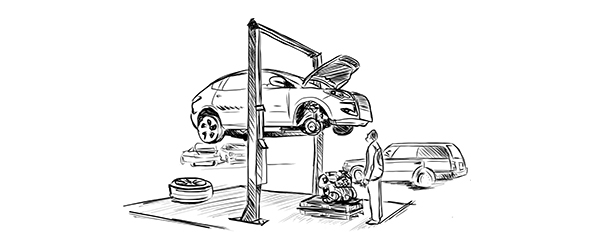Tell us about your credentials, education, and experience. How did you become an expert?
I have degrees in mechanical engineering and went to work at Oak Ridge National Laboratory (ORNL), a Department of Energy (DOE) multiprogram research lab. In the early years of my career, our alternative energy research was primarily focused on energy security, later expanding to include greenhouse gas (GHG) emissions. I have always loved cars and did a lot of my own maintenance; I was fortunate to work on some interesting and impactful engines, vehicles, fuels, and advanced emissions control technologies for over 30 years. Our work has been cited multiple times by federal and California regulators, influencing national
fuel policy.
I have worked on bioethanol utilization since 2006, just before Congress passed the Energy Independence and Security Act. I was the lead engineer at ORNL during the DOE Mid-Level Ethanol Blends (MLB) program when we conducted vehicle, engine, and materials work with E15 and E20. During this program, we urged a move to higher-octane fuels. I felt that bioethanol could do so much more than simply displace gasoline. Bioethanol boosts octane and allows improved engine efficiency, thereby displacing even more gasoline and providing even greater reductions in GHG. The DOE heard us and supported a pilot high-octane fuel study, which led to the Co-Optimization of Engines and Fuels Initiative. After Co-Optima pivoted to novel, higher-risk combustion approaches, I was able to continue high-octane fuel work with industry partners. Throughout the last 17 years, while continuing to build on my fuel and engine experience, I have learned about modern agriculture and bioethanol production. I retired from ORNL in 2019 but have stayed engaged with the technical communities in agriculture, bioethanol, and vehicles.
In your experience, how has the automotive industry changed over the years?
I started driving in the 1970s. Cars were rather crude then, and early emissions control advancements could be troublesome for the consumer and the manufacturers. In my lifetime, we’ve seen the complete phase-out of tetraethyl lead and remarkable innovation in engine and vehicle systems. Vehicles today are safer, more durable, have more power and better fuel economy, and dramatically lower emissions due to the robust systems and the calibrators’ ability to micromanage the powertrain.
Flex Fuel Vehicles (FFVs) came on the scene about 25 years ago and ramped up to over 150 different models being offered in 2013. The idea for FFVs arose from the challenges of fueling vehicles with alternatives that were not widely available. Flex Fuel was a great idea that, in my opinion, was never fully implemented. A lack of regulatory certainty led to fewer and fewer FFVs being offered each year since 2013. To develop product plans, manufacturers need to know at least 3 to 5 years ahead of production how their vehicles will be regulated.
For years, I’ve encouraged automakers to build optimized FFVs, vehicles that produce exceptional power and efficiency when fueled with high-octane E85 while still operating adequately with gasoline. Only a few manufacturers have produced FFVs that take full advantage of E85, some producing up to 25% more power with E85 than with gasoline. I’d like to see this become commonplace, with a focus on improved efficiency. My view is that it is all in the regulators’ hands. With honest accounting of carbon sources and appropriate incentives, manufacturers would produce optimized bioethanol-fueled vehicles, making a significant contribution to curbing carbon emissions.
What is the biggest bioethanol myth you have to dispel regularly?
There are two. One is the food versus fuel “debate.” There is no debate. U.S. farmers produce about 15 billion bushels of corn annually. About one-third of the crop produces bioethanol, and the bulk of the other two-thirds is “food that our food eats,” including a valuable high-protein co-product from the bioethanol production process (DDGS). In any given year, there are one to two billion bushels of carryout, which is the corn left over from the previous harvest just before the harvest. Clearly, there is no competition between food and fuel.
The other trope is that it takes more energy to produce a gallon of bioethanol than it contains or that the carbon intensity (CI) of bioethanol is worse than that of petroleum. These matters have been analyzed comprehensively by DOE and its laboratories. Bioethanol produced from corn demonstrates a substantial positive energy balance, meaning that the process of producing bioethanol fuel does not require more energy than the amount of energy contained in the fuel itself. Corn bioethanol’s CI today is about half that of gasoline and is improving all the time. With continuous improvement in agriculture, bioprocessing, and carbon reduction initiatives, we could see net-zero carbon bioethanol come to market in a few years.







